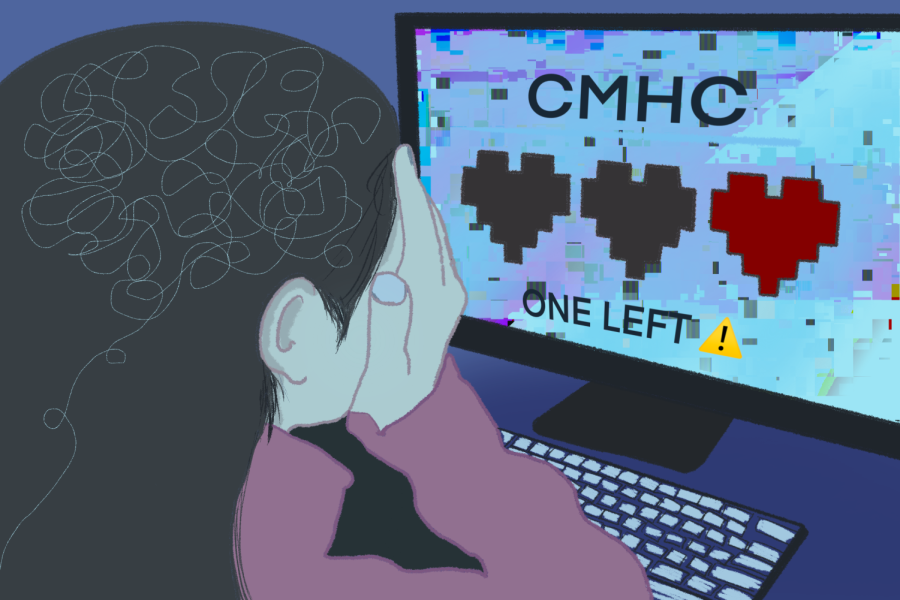CMHC, eliminate waiting periods for students to see a provider
June 30, 2022
When I called to schedule a single session appointment at the Counseling and Mental Health Center (CMHC) towards the end of last semester, I was told that after my appointment, I would have to wait three weeks for my next single session appointment.
Students’ mental state and overall well being should be the number one priority for the University. There should not be barriers, such as waiting periods, standing in the way of students receiving the help they need when they need it.
In order for the CMHC to meet the needs of their students promptly, they should expand their location and space, hire more providers and create more available appointments so that students won’t have to deal with unreasonable waiting periods.
The CMHC offers different resources to students, including free single session appointments, a crisis line, wellness workshops and events and access to MindBody labs. While some students may just want to use the MindBody labs or attend wellness workshops and events, others may feel that they need to see a provider.
Economics junior Kriti Aryal expressed her belief that students should be able to see a provider whenever they need to.
“I don’t think (students) should wait at all. CMHC needs to do everything in their power to ensure that students are in good shape mentally,” Aryal said.
How soon and how often a student can see a provider at the CMHC depends on availability and student demand.
Dr. Ginny Maril, associate director for clinical services at the CMHC, shared that the CMHC does not want waiting periods to stand in the way of students receiving counseling promptly.
“We don’t want folks to be waiting either,” Maril said. “It is something that’s on our radar and something we take really seriously.”
Maril shared that the CMHC has been making progress. She said they hired more staff, added more appointments and a case management team and are offering telehealth services. Maril also mentioned that students can communicate with a counselor in real-time through a free digital app called MySSP (My Student Support Program).
These are all great ways to better help students receive assistance; however, long waiting times are still standing in the way. And even though there are digital options for students to meet with providers, some students may want to speak with someone face-to-face. In these cases, they cannot turn to telehealth or the MySSP app.
Although some students may not feel like they are having a crisis, they may still feel that they need to meet with a provider as soon as possible, such as through a single session appointment, and they deserve to do that without a wait. The longer the wait, the harder it is on students.
No student should have to face a waiting period in order to see a counselor. UT is a well-established university. It has the means and ability necessary to ensure that every single person here receives care and support promptly.
The CMHC should overall expand its resources so that more students can see a provider at the same time. The CMHC currently occupies one floor, the fifth floor of the Student Services Building. A university with more than 50,000 students should not have just one floor dedicated to mental and emotional well-being.
Students should be able to receive help from the CMHC whenever they need it, but it proves difficult when there is lack of availability and high student demand. The CMHC needs to expand to ensure all students are having their needs met promptly and efficiently.
Kamal is an international relations and global studies and economics junior from Irving, Texas.



